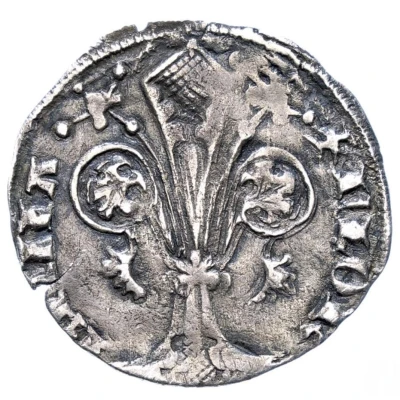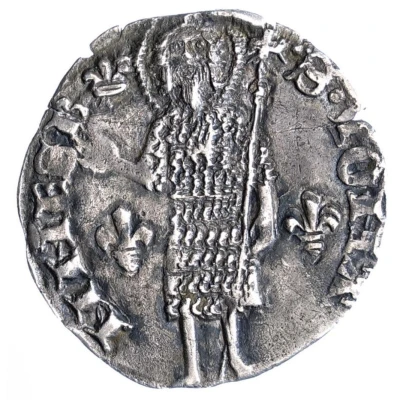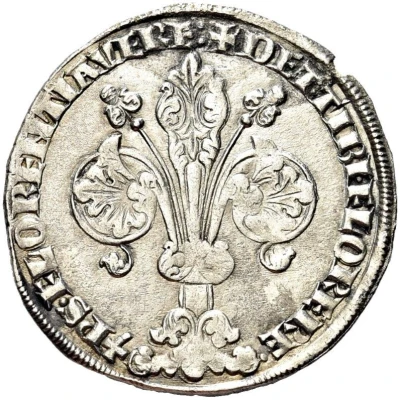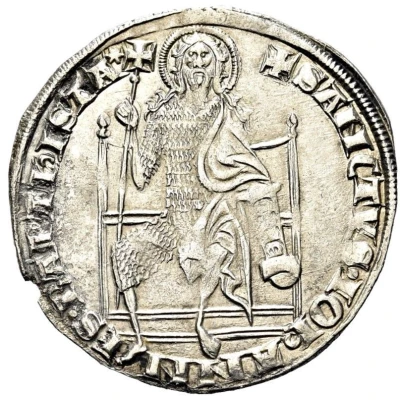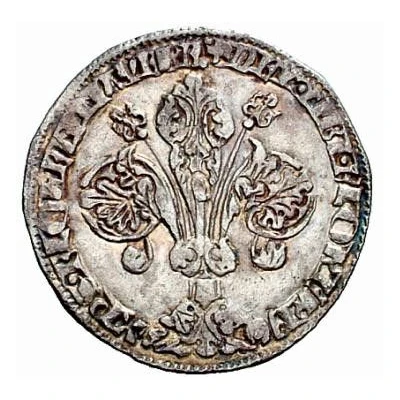
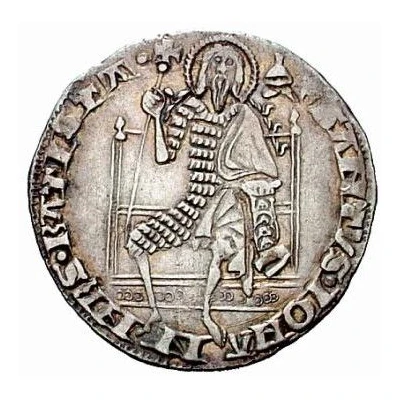

Grosso of 30 denari ND
| Silver (.958) | 2.05 g | 22 mm |
| Issuer | Republic of Florence (Italian States) |
|---|---|
| Period | Republic of Florence (1115-1532) |
| Type | Standard circulation coin |
| Years | 1318-1326 |
| Value | 30 Denari (⅛) |
| Currency | Fiorino (1115-1532) |
| Composition | Silver (.958) |
| Weight | 2.05 g |
| Diameter | 22 mm |
| Shape | Round (irregular) |
| Technique | Hammered |
| Demonetized | Yes |
| Updated | 2024-10-05 |
| Numista | N#85096 |
|---|---|
| Rarity index | 97% |
Reverse
Saint John the Baptist, enthroned, wearing an animal fur, and holding in his right hand a staff ending in a cross, and in his left hand a scroll with the word ECCE. Mintmaster's symbol precedes legend.
Script: Latin
Lettering:
✠ SANTVS• IOHĀ N NES• BĀTISTĀ•
ECCE
Engraver: Lippo di Aldobrandino
Edge
Plain
Comment
For well preserved coins, the date can be determined from the mintmaster's mark reverse, to the right of the saint's head (see red arrow in photos):
1318, 1st semester. Dardano Acciaiuoli - a flint. MIR 51/1and CNI 127 to 130
© Bertolami Fine Arts
1318, 2d semester. Lippo Aldobrandini - miter. CNI 136-139 (main photos)

1319, 1st semester. Ubertino Strozzi (1st), Filippo Bonsignori (2d) - crescent moon. CNI 143-144, 147
1320, 1st semester. Lapo Strozzi - nail. CNI 151
1320, 2d semester. Uberto Albizzi - star. MIR 51/5, CNI 154-155
©Numismatica Ars Classica
1321, 1st semester. Filippo Bonsignor - flower. CNI 159
1322, 1st semester. Gherardo Gentili - trefoil w/stem. CNI 171-172
1324, 1st semester. Strozza Strozzi - rattle. CNI 183
1326 1st semester. Giotto Peruzzi - upright sword. CNI 196-197
Interesting fact
One interesting fact about the Grosso of 30 denari ND (1318-1326) from Republic of Florence (Italian States) is that it was minted during a time of significant economic and political change in Italy. The coin was issued during the reign of Pope John XXII, who was based in Avignon, France, and was a key figure in the conflict between the Papacy and the Holy Roman Empire. The coin's design, which features the image of a standing figure holding a scepter and a shield, may have been meant to symbolize the power and authority of the Papacy during this period. Additionally, the use of silver in the coin's minting was a deliberate choice, as it was a valuable and highly sought-after metal at the time, and its use in coinage was seen as a way to demonstrate the wealth and prestige of the issuing authority.
